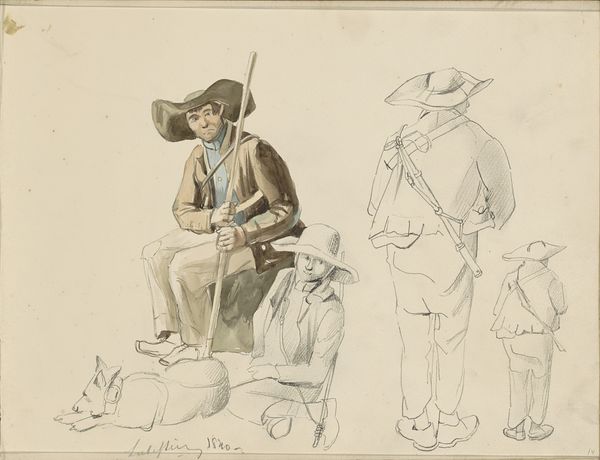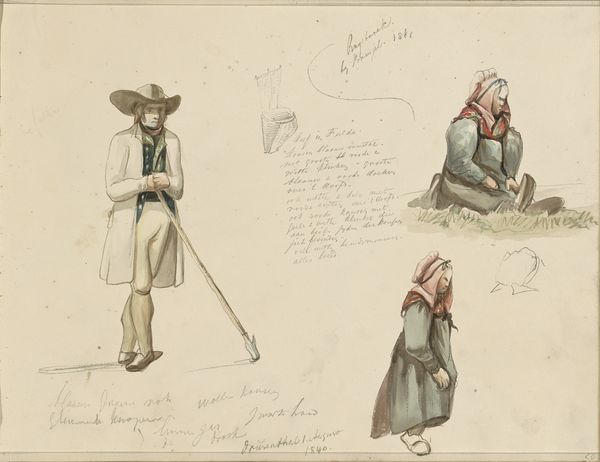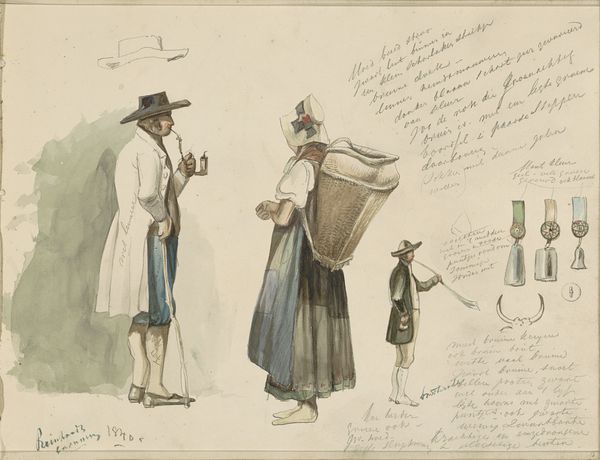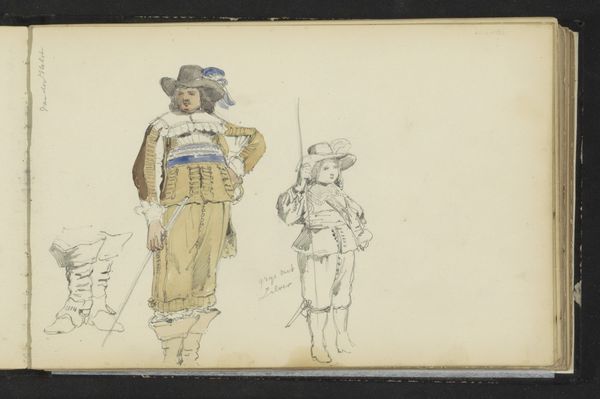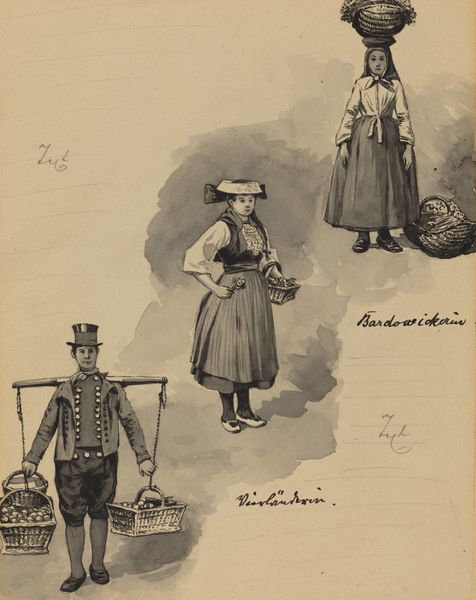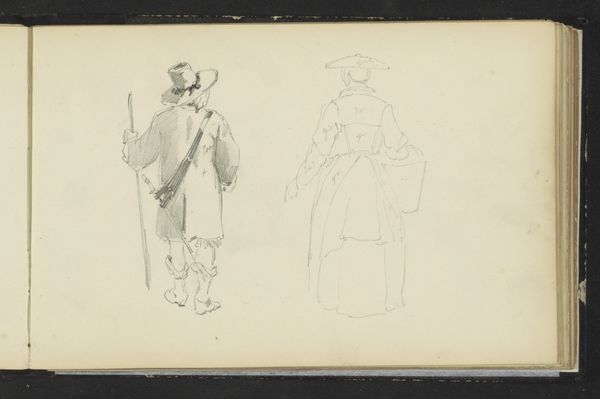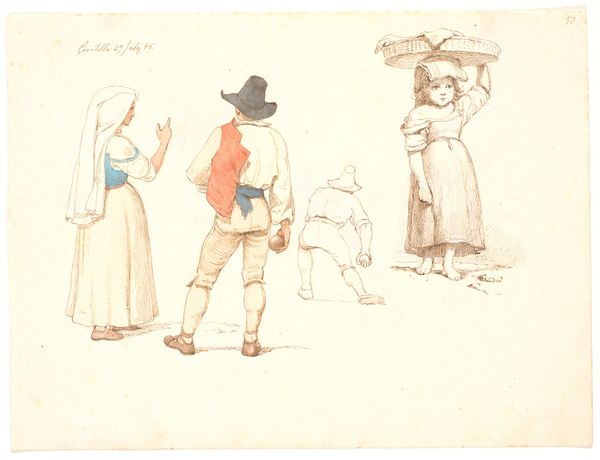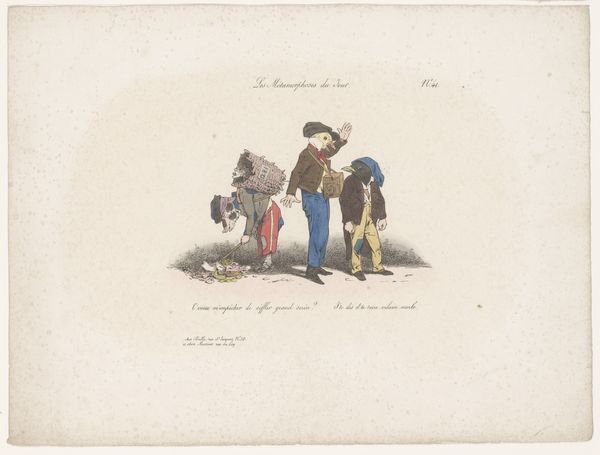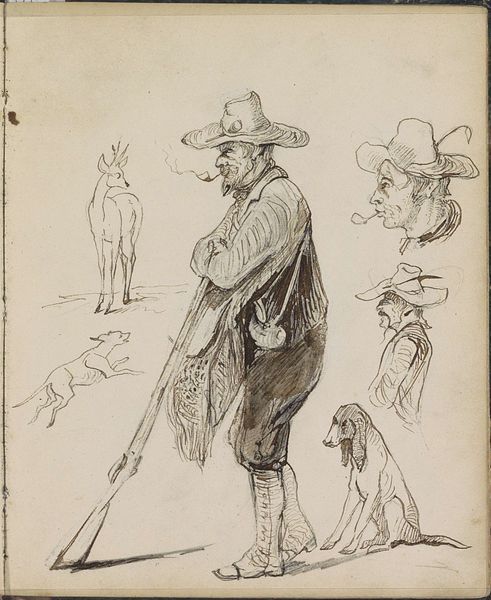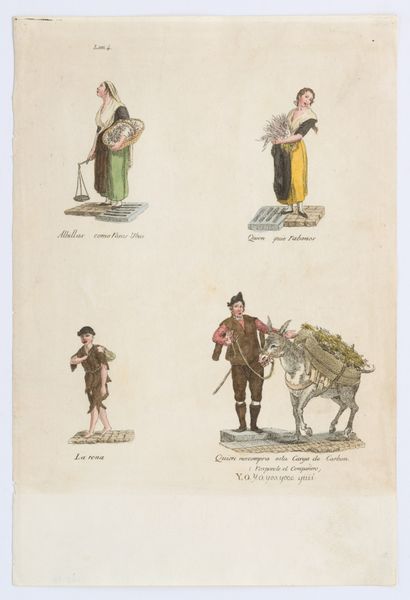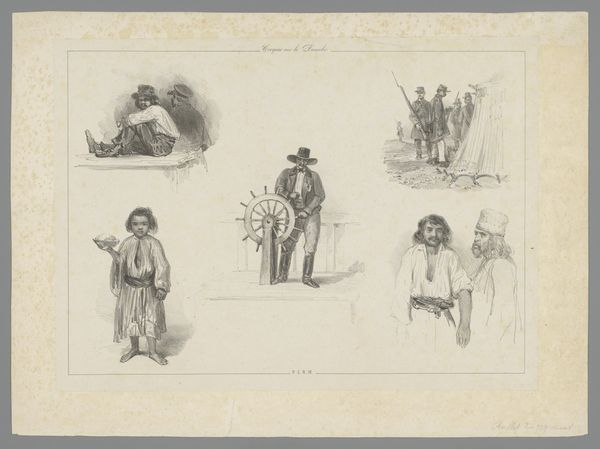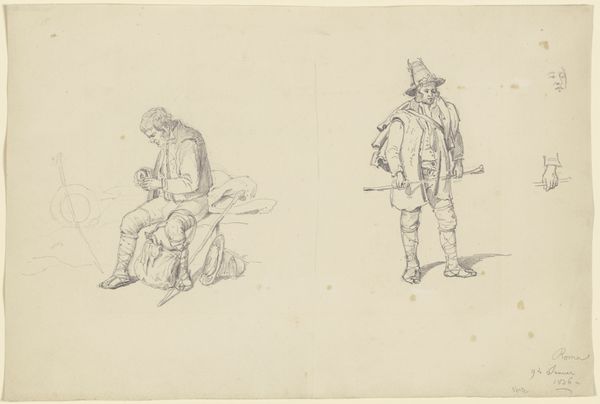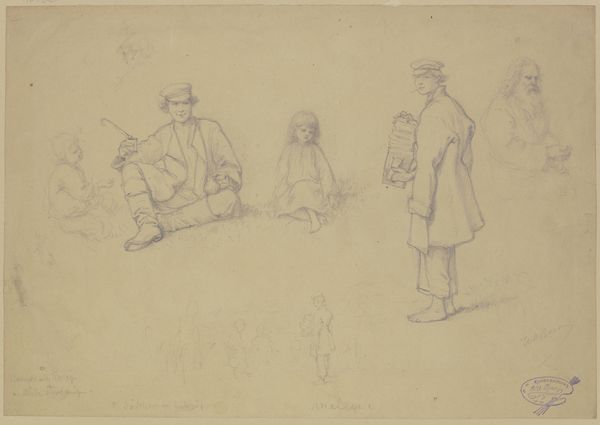
watercolor
#
portrait
#
watercolor
#
romanticism
#
watercolour illustration
#
genre-painting
Copyright: Rijks Museum: Open Domain
Curator: What a striking piece! This watercolour, entitled 'Geluksbeelden'—'Images of Happiness'—was created around 1840 by Johannes Tavenraat and resides here at the Rijksmuseum. Editor: There’s a starkness to it, wouldn’t you say? Almost austere despite the implication of "happiness." The figures look quite weary, their postures lacking exuberance. Is it the restrained palette of blues, greys, and browns contributing to that impression? Curator: Precisely. Watercolour as a medium often lends itself to softness, yet here Tavenraat seems to deliberately emphasise the outlines, rendering almost a social document in the Romantic style, far from idealizing the subjects. Their clothing and posture mark them out. We might see it as a genre painting documenting a particular class or region. Editor: The symbols definitely tell a story. What does that basket on the woman’s back signify? And the unusually wide-brimmed hat of the man? Curator: The basket likely represents labour, toil perhaps, burdens both literal and symbolic shouldered by women of the time. As for the hat, and the fishing spear: that's typical attire of laborers and field workers. They offer insight into the figures’ occupations and social standing within Dutch society in the early 19th century, revealing cultural identity. This connects strongly to other imagery of the same time where this is explored by local artistists. Editor: And even the little details: the dog at their feet, the child leaning on the father – there’s an attempt to infuse it all with some sort of familiar connection even in these conditions. To create a connection with something we still seek in today's social narratives. Curator: It speaks to the period’s increasing focus on everyday life, and especially country people – to portray it accurately, even if not necessarily appealingly. The artwork’s title hints at what "images of happiness" truly represent at that time for specific individuals, which maybe they appear different in contrast of how we perceive that imagery today. Editor: Right. Maybe “happiness” wasn't necessarily about overt joy, but resilience, or the simple continuity of life despite hardship. That gives the work a modern resonance. Curator: A good reminder of how symbols and even simple compositions become freighted with socio-political meaning that endures and evolves. Editor: A powerful slice of social history then. I'll look at watercolour in a new way after this.
Comments
No comments
Be the first to comment and join the conversation on the ultimate creative platform.
